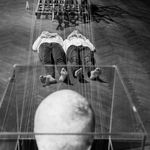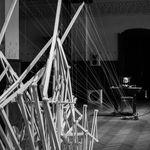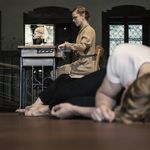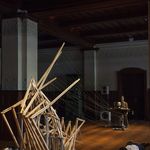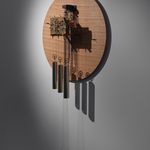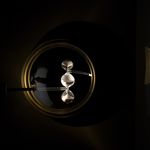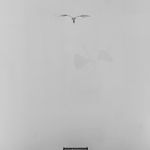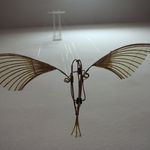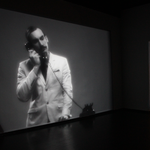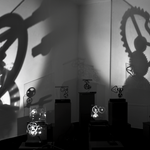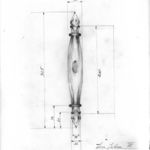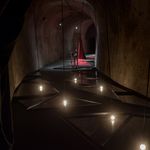Meta Grgurevič / Impossible Machines I Künstlerhaus Graz

Meta Grgurevič / Impossible Machines
Künstlerhaus, Halle für Kunst & Medien (KM— Graz), Burgring 2
1 February 2019 − 2 April 2020
Press talk: 31 January 2020, 10:00
Opening: 31 January 2020, 18:00
Curator: Simona Vidmar (UGM Maribor Art Gallery)
UGM Maribor Art Gallery (Slovenia) and Künstlerhaus, Halle für Kunst & Medien in Graz (Austria) in collaboration with The Marignoli di Montecorona Foundation in Spoleto (Italy) are proud to present the first comprehensive overview of works by Meta Grgurevič. Meta Grgurevič is one of the most intriguing Slovenian artists of the younger generation. In her work she studies and constructs kinetic systems and assembles them into multidimensional settings. Meta Grgurevič / Impossible Machines is an exhibition in two parts, running concurrently in Maribor and Graz and representing the artist's key works created over the past eight years.
Grgurevič is part of a breakthrough generation of Slovene graduates of Accademia di Belle Arti in Venice during the mid-2000s. From the very beginning, she entered the scene as a maverick, pushing the discourse of contemporary art in Slovenia into previously unexplored directions. Like many artists of this generation, she approaches artmaking as a collaborative effort, working together with other artists, incorporating performativity as a key element of the artistic process and shaping a work of art into a total experience. At the same time, Grgurevič is dedicated to a very intimate exploration of art in relation to technology and to the process of materialisation of scientific and artistic ideas, through which she developed a fascination with mechanical systems that create movement, light effects or illusions. Working with various experts in the fields of electrical engineering and mechanics, music and theatre, Grgurevič dissects and deconstructs mechanisms from within and in an almost obsessive manner looks for perfection in the movement and the interdependence of mechanical elements. "Studying and imagining different mechanisms or kinetic systems, discovering how they operate, the impact of their existence and their rules of inner workings, has always spurred my interest and pushed me towards an unexpected experience."
Over the past decade, the artist has developed a series of highly poetic, fully functioning, impractical mechanisms—including "Letatlin" (2018), a small kinetic model flying with the help of an old turntable; "Triptych Clocks", a three-part kinetic sculpture that transforms clock mechanisms into resonant sound objects; "The Levitating Thread", a kinetic object, where two high-speed electric motors create a web of nooses and threads; or "13 Mechanical Principles", where a chain of thirteen different kinetic elements forge a mechanical solution for a fluid choreography. Her various kinetic sculptures are tied together by the principle of recontextualizing old inventions and ancient knowledge, they function as low-tech devices and are committed to the hand made aesthetic. By introducing sound, video, light, and performance, the artist then places these mechanical objects into poetic kinetic scenographies. The driving force of these installations is to achieve harmony of their constituent parts—of mathematically exact kinetic objects, their movements, sound, light and performance. Thus she not only creates a setting for individual kinetic sculptures, but an illusion of fluidity and connectedness. "Through the years of making art, I have begun to understand the definition of a fully functioning system as a metaphor for my own system in relation to and responsibility toward the social environment, based on a reflection about the cooperation between individuals and the fusion of different entities into a poetic whole."
Grgurevič’s evocative installations build on the merging of what is incompatible—mathematical ratio, precision, and balance are joined with their apparent antipode—the illogical, the imaginary, and even the incomprehensible. In borderline situations that arise, the artist confronts everyday anxieties and optimism, laws of physics and utopia. And it is utopias, with their uncensored ideas and ways of thinking that the artist continually incorporates in her projects, which manifest a space of (social and individual) resistance. A subtle resistance, the one that employs radical imagination as its weapon and which in a utopian-poetic spirit calls for daydreaming and irregularity, but also for interconnectivity and common understanding. Utopia is a gesture of special significance in the present day, marked by a prevailing dystopian discourse, and it is a process, not a destination. The exhibition's curator, Simona Vidmar (UGM Maribor Art Gallery): "The works of Meta Grgurevič, with their low-tech, even archaic mechanisms, are reminiscent of the original gesture of modern kinetic art, when Duchamp thought to mount a bicycle wheel on a stool as he found it comforting to watch it spin. Meta's machines are also immensely comforting, reminding us of something we have always known and reassuring us that the world around us is the way we think it is. Which, of course, is pure utopia."
The exhibition at UGM Maribor Art Gallery and Künstlerhaus, Halle für Kunst & Medien in Graz offers insights into the work of Meta Grgurevič at an early peak of her career. Selected projects from the period 2012−19, including productions in collaboration with the Slovene national ballet ensemble, Ljubljana Puppet Theatre, visual artist and set designer Urša Vidic, pianist and composer Bowrain (Tine Grgurevič), visual artist Jaša, and many others, will be on view.
Meta Grgurevič (*1979 Ljubljana, lives in Ljubljana) completed her postgraduate studies in painting at the Academy of Fine Arts in Venice in 2007. While still at the academy, she collaborated with Jasmina Cibic, Mara Ambrožič, and Mary Favaretto in the Passaporta art collective, in which they were addressing the issue of transit spaces. Following the breakup of the collective, she began developing independent projects and maintained the tradition of collaborating with artists from various fields.
The works of Meta Grgurevič have been presented at numerous group and solo exhibitions: Among other, she participated at the 56th Venice Biennial (2015) as part of the project UTTER of the artist Jaša at the Pavilion of Slovenia; at the 13th Prague Quadrennial of Performance Design and Space (2015), representing Slovenia with the stage design of the ballet performance "Tristan and Isolde"; at the 30th International Biennial of Graphic Arts Ljubljana (2013) with co-artist Urša Vidic, where they received a special mention of the international jury for their project "Mechanical Trinkets / Silver Thread" (2013); at the 31st International Biennial of Graphic Arts (2015), where her project "Timekeepers" (2015) received the Audience Award. In 2016, she was a resident artist at the Mahler and LeWitt Studios Foundation in the US. In 2017, her project Silenzio in co-production with the Slovene National Theatre Opera and Ballet Ljubljana opened the 32nd International Biennial of Graphic Arts as well as the new exhibition venue Švicarija Creative Centre in Ljubljana. The artist has exhibited her works in Slovenia, Italy, Austria, Finland, the US, and elsewhere.
